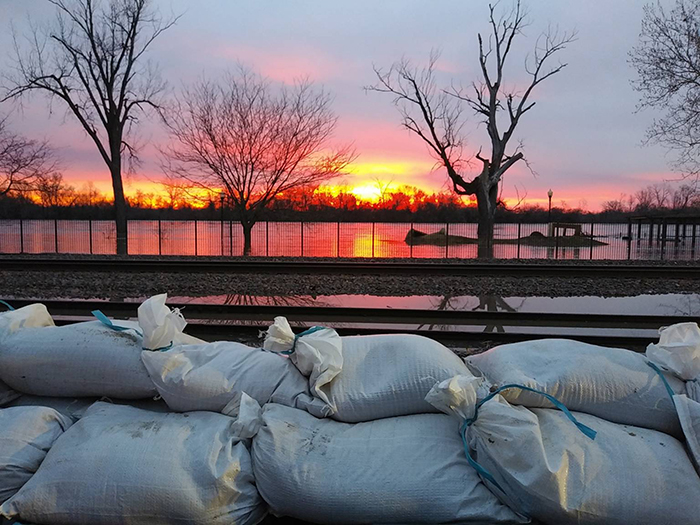City of Leavenworth and Levee District Protect Residents with Flood Fight Plan
Posted on Wednesday, April 17th, 2019 by Affinis CorpIn Stormwater, tagged in Tags: flood fight, flooding, levees

Flood season officially happens between April 1 and August 1, but things got started earlier this year with rain and snowmelt contributing to river water raises in Mid-March. Two of our clients, the City of Leavenworth, Kansas and Riverside Quindaro Bend Levee District (RQBLD) have already taken measures to protect their communities and prevent flooding. Last month, we worked closely with both entities to prepare for heavy rains, which impacted parts of the metro area.
The City of Leavenworth implemented sandbagging procedures along the entire length of their floodwall, which is located near their community center. Designed nearly eight years ago, the city wanted to create a more permanent solution to protect the area. Early this month, forecasts predicted the river would rise above the wall, so we worked together to implement procedures from their O&M Manual, which provides direction on how to operate the sluice gates and most effectively add sandbags. Due to those efforts, the floodwall did not overtop, leaving the area unimpacted by the rising water.
Because of its location, the RQBLD was less affected by the rains. Affinis has been the engineer-of-record for RQBLD for over 20 years. In that role, we review proposed plans and specifications for conformance to USACE and levee district criteria. During recent flood events, water barely reached the toe of the levee, and as a result, the only significant action item required was the closing of sluice gates.
With the recent snow fall in the Dakotas and Nebraska (in addition to the rain that caused the widespread flooding in March), levee operators should:
- Follow and track forecasted weather.
- Review their emergency action plan to determine their trigger elevations.
- Compare that data to the forecast, along with how much time they have to implement any prevention measures.
- Determine when they need to get started by reverse planning.
- Ensure everyone on the flood fight team understands the tasks for which they are responsible and the trigger elevations when their assigned action needs to begin.
- Identify the responsible agency to implement emergency responses, such as road closures or issuing evacuations from the levee protected area.
Taking these steps not only protects infrastructure, but also saves lives. Because of the City of Leavenworth and RQBLD’s preparations, they were able to keep residents safe and businesses open.
To learn more about flood fighting and what this season has in store, contact me at jdavis@affinis.us.